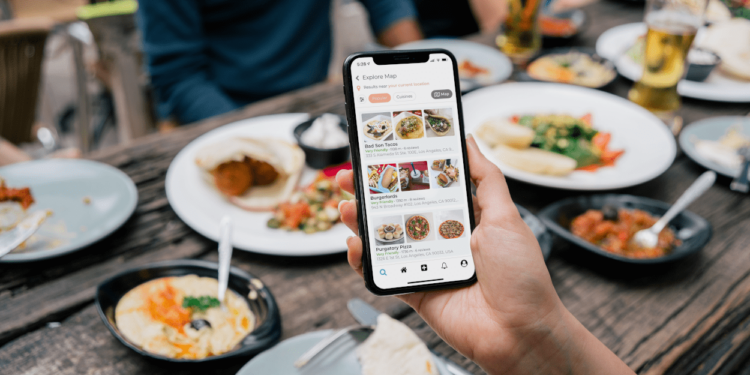Like other “techs” — EdTech, FinTech, HealthTech — FoodTech is getting enormous traction today, and for a good reason. Without any doubt, people will always need food, searching for ways to produce, store, and consume it more efficiently. There’s no surprise that many startups choose to develop FoodTech software — food isn’t likely to ever lose its target consumers.
So what exactly is FoodTech? Our friends from Anyforsoft, a FoodTech development company, helped us figure it out. Let’s dive in!
What Is FoodTech?
In a nutshell, FoodTech is a technology branch involved in food production, preservation, quality control, delivery, etc. Although the term sounds like a 21st-century buzzword, the industry has been around for millennia. Ancient people used microorganisms to make bread, cheese, yogurt, beer, and wine; a French inventor Nicolas Appert invented food canning in 1810, and Louis Pasteur developed pasteurization in 1864 — these all are examples of FoodTech, just to name a few.
However, with the advent of computers, FoodTech received a new twist. From making farming more sustainable to calculating your daily calorie intake, IT is revolutionizing FoodTech. Artificial Intelligence (AI), blockchain, the Internet of Things (IoT), and other cutting-edge technologies have successfully integrated with food technology to improve the way we grow and consume food.
Key Areas of FoodTech
FoodTech covers six major areas. Let’s take a closer look at each.
1. AgTech
AgTech refers to the application of technology to agriculture, horticulture, and aquaculture to boost yield, efficiency, and profitability. This can include a variety of tech solutions that make farming processes more efficient and enhance the quality of products through drones, IoT-powered sensors, and farm management tools. The most popular applications of technology in agriculture include:
-
farm management software that helps farmers effectively manage and optimize daily tasks on the farm;
-
agriculture marketplaces to help food producers buy and sell seeds, farming equipment, and produce without intermediaries;
-
farm robotics to automate repetitive manual tasks on the farm;
-
vertical farms that automatically adjust light and humidity levels to provide access to fresh produce even in a city apartment.
2. Food Science
Food science describes applying scientific practices to food processing, developing new food products, designing processes to produce these foods, enhancing texture, taste, and nutrition, improving food safety, making food more affordable, etc. Today, the most popular areas of food science include developing alternative proteins and new ingredients to replace additives such as sugar.
3. Foodservice
Foodservice has been around for centuries, often referred to as a separate industry. In essence, food service means preparing and distributing food outside the home. Needless to say that serving products to customers has completely changed with the advent of computers and the Internet. Foodservice apps are a popular choice with startups. Here are some most common examples:
-
reservation platforms that allow users to book a table in a convenient way;
-
foodservice management tools that help restaurants improve their operations, strengthen their marketing efforts, collect customer feedback, make inventory management more transparent, etc.;
-
payment services;
-
cloud kitchens that enable renting kitchens to other companies for their more efficient use.
4. Consumer Tech
Consumer technology is a blanket term for a vast variety of products and services intended to help people solve problems and provide them with enhanced daily experiences. In the food industry, consumer tech refers to services and tools that assist users with cooking and identifying the best foods to help them reach their personal goals. The most common consumer tech applications include:
-
food recommendation apps to help users choose restaurants, meals, wines, etc., based on filtered search;
-
diet trackers to assist users with planning their meals, ensuring they get all of the necessary nutrients;
-
recipe applications;
-
IoT-powered kitchen appliances.
5. Supply Chain
A food supply chain is a series of processes that describe how the produce from a farm comes to our tables, including production, processing, distribution, consumption, and disposal. Today, the food supply chain is becoming increasingly digitized and automated. Here are some most common applications of novel technologies in the food supply chain:
-
smart stores that enhance in-shop customer experiences by automating processes, e. g., self-checkout;
-
food waste management tools that help connect restaurants and stores with food banks and direct consumers and manage prices for foods that are close to expiration;
-
sustainable packaging;
-
product tracking solutions that help food suppliers track products across the entire supply chain using blockchain and other cutting-edge technologies.
6. Food Delivery
As its name suggests, this area of FoodTech involves the delivery of groceries and meals. Here are some interesting cases to get you inspired:
-
restaurant delivery applications that allow users to order meals from local restaurants;
-
food e-commerce platforms that offer convenient delivery options, including farm-to-home solutions;
-
QCommerce (quick commerce) solutions that focus on delivering groceries to consumers almost instantly;
-
meal kits — delivering ingredients or ready-to-eat meals to customers;
-
food subscription startups that deliver weekly or monthly boxes of curated foods or beverages to their customers.
What’s Next?
FoodTech is here to stay for good — there will always exist a need for new solutions to satisfy the ever-increasing consumer and business needs. Given that, FoodTech software, from a recipe app to a complex food logistic solution, will always be an excellent idea for a startup.



